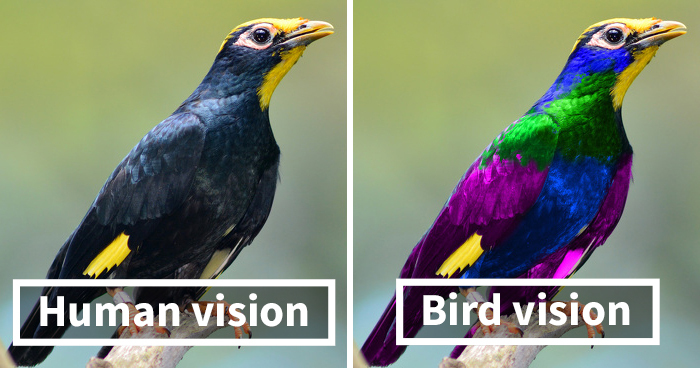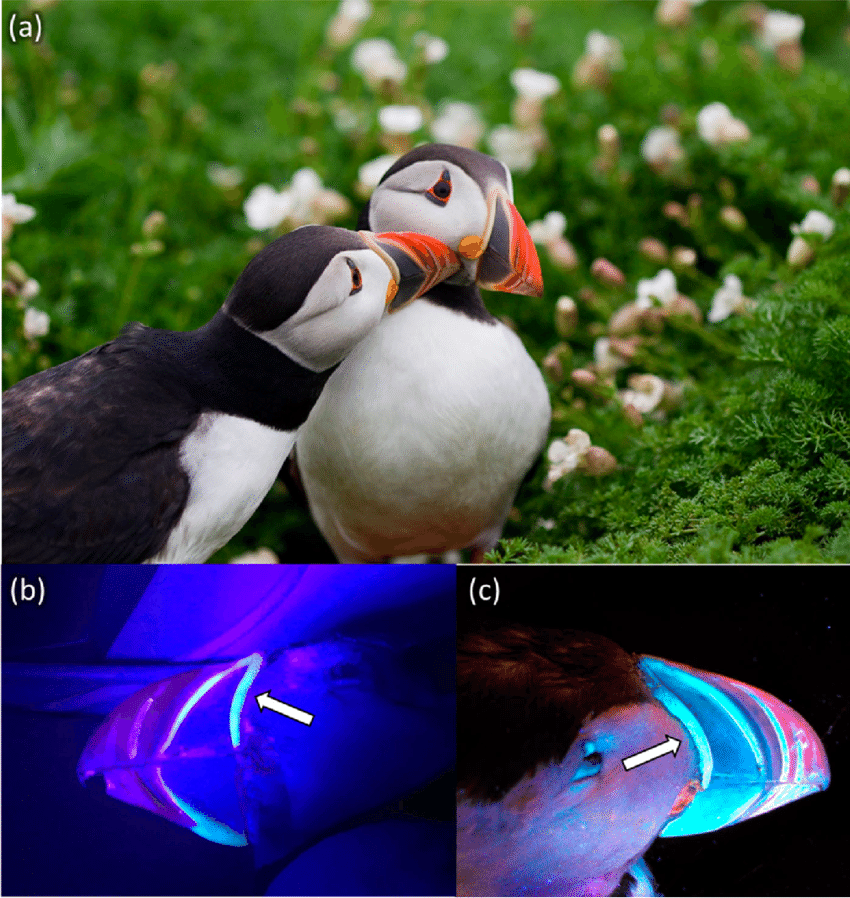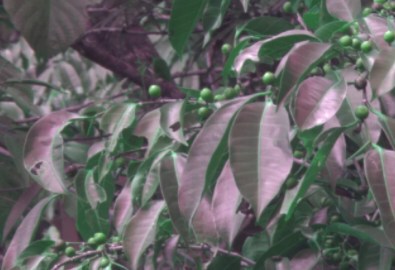 Science Matters
Science Matters
““To see a world in a grain of sand, or heaven in a wildflower.
Hold infinity in the palm of your hand, and eternity in an hour."
~ William Blake
Bird Vision
Dr. Gordon A. Maclean
We’ve been dealing with some heavyweight issues in this column so far and I thought it was time for something a bit lighter: what do birds see?
It may seem like an odd topic, but there have been some exciting discoveries on this topic in the past few years. Maybe you’re vaguely aware that birds see differently and have even placed decals on your glass doors or windows to protect them. (See mine below.) But how exactly do birds see?
To the human eye, the leaf decal on the glass is somewhat transparent. So how does this prevent birds from crashing into glass?
It has been found that birds have tetrachromatic vision and the colors of light that their eyes can detect extends beyond what people can see. OK, let's break that sentence down a bit.
You may recall from school that we have rod cells and cone cells in our eyes. The rod cells essentially distinguish the brightness or darkness of an object. In very dim lighting, it’s the rod cells that let you see around you, but it’s challenging to determine an object’s color. The cone cells work best in brighter light, and they give us our ability to see different colors.
Monochromatic vision is sight without any input from cone cells. Think of old black and white television or movies. You can see the objects, identify what they are, but you have no clue what color anything is.
Dichromatic vision is found in many animals and features just two types of cone cells. Dogs are reputed to have monochromatic vision, but it’s been found that most dogs are dichromatic and have cones sensitive to blues and yellows (yellow being a blend of green and red light.) The following is a comparison of what a person with normal color vision sees and what a dog sees in a color spectrum (courtesy of https://www.akc.org/expert-advice/health/are-dogs-color-blind/)

People with normal color vision are trichromatic. We have cones sensitive to blue, green, and red light; all other colors we see are combinations of those three colors. For proof, take a magnifying lens and look very closely at the monitor you are reading this on; all you will see are blue, green, and red dots.
OK, back to birds. It seems that many birds, but not all, are tetrachromatic. That means that they have four types of cones and see four primary colors instead of our three.
So, they see colors very differently than we do. Not only that, but they also see parts of the electromagnetic spectrum (discussed in my last column) that we are not equipped to see. But they can see ultraviolet light. Instead of our basic color palette of blue, green, and red; they see ultraviolet, blue, green, and red. The numbers in the following image show the peak cone sensitivity wavelength in nanometers.) Image from http://photographyoftheinvisibleworld.blogspot.com/

Because of our color perception limitations, it’s impossible to show you the world the way a bird sees it. We can get an idea, but we have to get their 4-dimensional color world into our 3-dimensional color world by sacrificing something.
There are two common ways to go about this “color shifting” and “color blending.” Color shifting removes one of the avian cone perceptions from the picture (pick any three of the four avian colors and display them as blue, green, and red.) Color blending combines two of the avian cones, typically the ultraviolet and blue, and shows them as blue.
Yeah, I know, it's a roundabout way of going at it, but our eyes just cannot match up to theirs, and we must make a sacrifice somewhere to get it on our own color wheel.
In doing this, we can get a pretty good idea of the world of colors that birds see and what we are missing. The following are photos taken with cameras sensitive to ultraviolet light and color adjusted as I described above.
 Image source uncredited.
Image source uncredited.

(from https://www.birdsoutsidemywindow.org/2019/08/06/spiny-tongues-and-glowing-beaks/)

European starling in human vision, ultraviolet only and combined. (from http://photographyoftheinvisibleworld.blogspot.com/2016/02/european-starling-sturnus-vulgaris-in.html)

How birds see leaves (from https://www.nature.com/articles/s41467-018-08142-5). Ultraviolet colors are shown as red, green and blue tones remain the same.
We can learn a couple of things from all of this. First, many birders put on camouflage jackets thinking that they will blend in better so as not to tip off wary birds. Unfortunately, most of these are treated with dyes that actually reflect UV light, so you end up advertising yourself to all the birds in the vicinity.
Second, those transparent decals we put on the window are coated with a material that very brightly reflects ultraviolet light. To a bird’s eye, those are not transparent but a very bright ultraviolet, even though it looks colorless to people. Think of it like a construction worker's visibility jacket on your window. BUT, I have to tell you that those ultraviolet dyes wear out rather quickly. So replace them every two to three years.
If you are interested in more details on what birds see, I would recommend starting with the following article from the National Wildlife Foundation website. https://www.nwf.org/Magazines/National-Wildlife/2012/AugSept/Animals/Bird-Vision
Previously...
- Science Matters: Angry Weather: Heat Waves, Floods, Storms, and the New Science of Climate Change
- Science Matters: An Immense World
- Science Matters: Fractals in Nature
- Science Matters: Fibonacci: Nature’s Mathematics
- Science Matters: Climate Change and Extreme Weather Events and You
- Science Matters: Raging Wildfires
- Science Matters: Wolf-Moose Population Studies
- Science Matters: Bird Vision
- Science Matters: Greenhouse Gasses: How They Work
- Science Matters: Reforestation and Climate Change
- Science Matters: The Carbon Cycle: Part Two
- Science Matters: The Carbon Cycle: Part One

